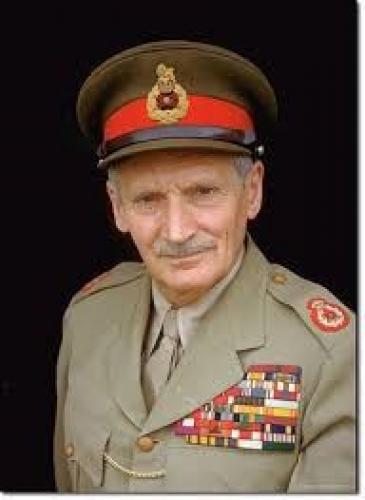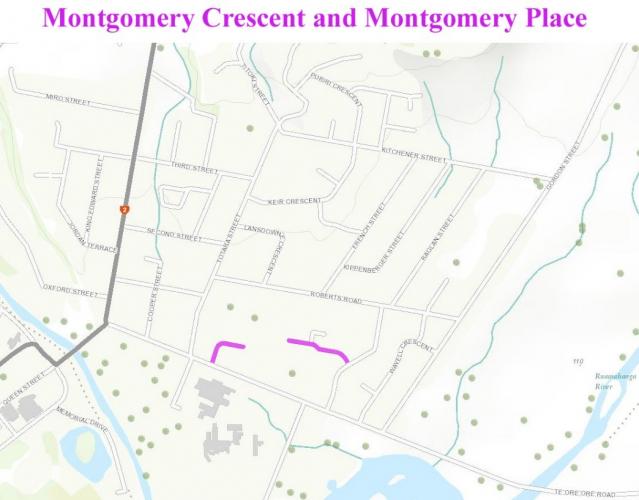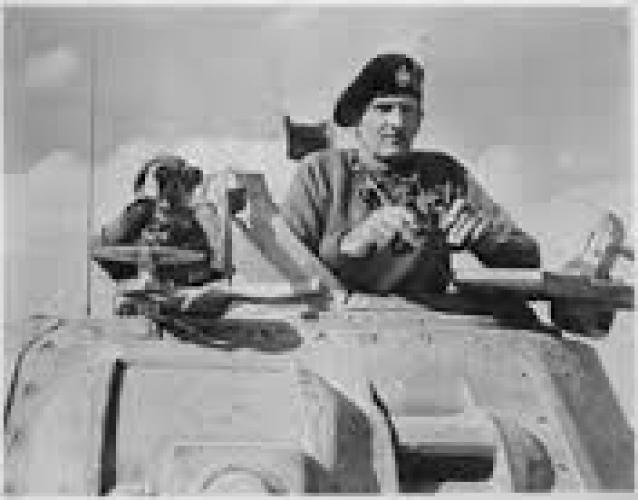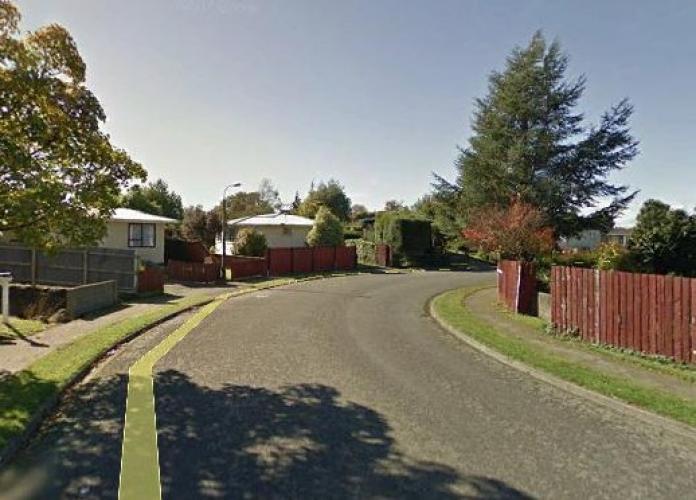103 Montgomery Crescent Masterton, street scene 2017
Reason for the name
This street was named in honour of Field Marshal Bernard Law Montgomery, 1st Viscount Montgomery of Alamein, KG, GCB, DSO, PC, DL nicknamed "Monty" was a senior British Army officer who fought in both the First World War and the Second World War.
Montgomery Crescent and Montgomery Place are small streets in the suburb of Lansdowne, Masterton. Most of the streets in this part of Masterton are named after leading British and New Zealand military figures.
These include Gordon Street (Gordon of Khartoum, died 1885); Roberts Road (Lord Roberts VC, c-in-c South African War, died 1914); French Street (Sir John French, cavalry leader in South African War, c-in-c BEF 1914-1915); Raglan Street (c-in-c British Army, Crimean War, died 1855); Kitchener Street (Lord Kitchener, victor at Omdurman, c-in-c after Roberts in South African War, War Minister 1914-1916, died 1916). These streets were named before World War One, reflecting pre-World War One fame.
Montgomery Place is a no-exit street running west off Churchill Avenue which links Te Ore Ore Road with Roberts Road. The street originally had 10 sections for state houses. Later the street was extended, doubling its length.
The street (along with Churchill Avenue) was named at the monthly Town Planning meeting of Masterton Borough Council on Tuesday 13 September 1949. The names reflected the fame of both men during World War Two.
The Minutes state: Naming of streets in Saunders State Housing Area. That the main street be named “Churchill Avenue” and the side street be named “Montgomery Place”. 1.
In the 1970s Montgomery Crescent was constructed off Te Ore Ore Road. Like Montgomery Place it was a no-exit street but the numbering of the street and its position suggests that it was the intention of Masterton Borough Council to join it to Montgomery Place. As at 2016, this has not happened.
Additional streets named after military figures were added after World War Two as this part of Masterton expanded. This latter group included Churchill Avenue, Wavell Crescent, Gort Place, Montgomery Crescent, Montgomery Place, Kippenberger Street and Allenby Street.
- Masterton Borough Council minutes, held by Wairarapa Archive
Author: Neil Frances Wairarapa Archive
Bernard Law Montgomery, 1st Viscount Montgomery of Alamein (1887-1976) usually known as ‘Monty’, was Britain’s most famous battlefield soldier of World War Two.
He was a career soldier, joining the British Army in 1908 after attending Sandhurst Military College. When World War One began he was adjutant of 1st Battalion Royal Warwickshire Regiment and during the retreat from Mons (August-September 1914) in Belgium and France he was shot in the lung. After recovery he served as a staff officer, ending the war as a lieutenant-colonel. Montgomery continued as a peacetime officer with service in Ireland, Palestine and India.
By 1939 he was a major-general in command of the 3rd Division which went to France with the BEF. His unit fought well against the German attack in May 1940 and during the retreat to Dunkirk. He held command positions in England and was known as a hard taskmaster on his soldiers and officers.
In 1942 he was appointed to command the Eighth Army in North Africa. His careful build-up, improvement of morale and considered tactics enabled the army to defeat Rommel’s German-Italian army at Alam el Halfa (August 1942) and later at Alamein (October-November 1942), one of the turning points in World War Two. The Eighth Army pursued Rommel across North Africa and later took part in the Tunisian Campaign which saw the surrender of Axis forces in May 1943.
He commanded in Sicily and Italy and was later appointed land forces commander for the invasion of France in June 1944. After Eisenhower became supreme commander, Montgomery continued to lead the British and Canadian forces until he took the surrender of German forces in north Germany, Denmark and the Netherlands in May 1945.
Montgomery was promoted to field-marshal in 1944 and was created Viscount Montgomery in 1946. He was Chief of Imperial Staff 1946-1948 and retired from military life in 1958. He died in 1976.








